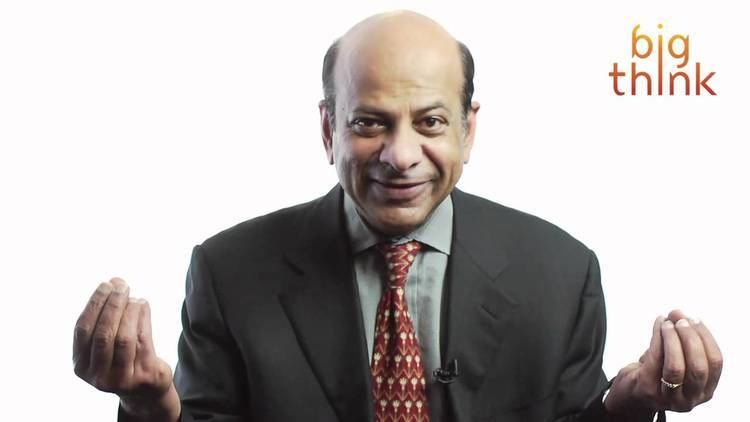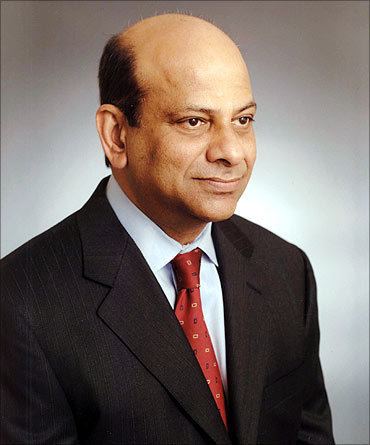Nationality United States Known for Reverse innovation | Name Vijay Govindarajan Role Author | |
 | ||
Born November 18, 1949 (age 75) ( 1949-11-18 ) Madras, India Occupation Professor and consultant Website www.tuck.dartmouth.edu/people/vg/ Books Reverse Innovation, The Other Side of Innovatio, How Stella Saved the Farm: A T, Ten Rules for Strategic I, Beyond the Idea: How to Execut Similar People Robert N Anthony, Anil Kumar Gupta, Marshall Goldsmith, Indra Nooyi, Pankaj Ghemawat | ||
Tedxbigapple vijay govindarajan reverse innovation
Vijay Govindarajan (Vee-jay go-vin-da-RAH-jin; born November 18, 1949) is Coxe Distinguished Professor at Dartmouth College's Tuck School of Business and Marvin Bower Fellow, 2015-16 at Harvard Business School. Govindarajan worked as General Electric's first chief innovation consultant and professor in residence from 2008-10. While working at GE, Govindarajan co-authored a paper entitled "How GE Is Disrupting Itself" with Chris Trimble and GE's CEO Jeffrey Immelt. "How GE Is Disrupting Itself," which introduced the idea of reverse innovation, outlines GE's attempts to embrace reverse innovation and gives reasons why companies, like GE, need to invest in these types of innovations, rather than just glocalization. Govindarajan is a two-time winner of the McKinney Award for the best article published in Harvard Business Review. Govindarajan's writing has been published in news sources such as The Wall Street Journal, The Washington Post and the The Economic Times. Govindarajan is the author of a blog featured by the Harvard Business Review where he discusses topics like reverse innovation and global business issues. He is also the author of a column on innovation that is published by BusinessWeek. Govindarajan, along with Christian Sarkar, published a blog post on the Harvard Business Review presenting the idea of developing a $300 house that would replace the dilapidated residences of impoverished people around the world. The Economist noted that "the blog was so inundated with positive responses that a dedicated website was set up, which has attracted more than 900 enthusiasts and advisers from all over the world."
Contents
- Tedxbigapple vijay govindarajan reverse innovation
- Learning from Authors Vijay Govindarajan Full Episode
- Education
- Career
- Awards
- Publications
- Reverse Innovation Create Far from Home Win Everywhere
- Selected publications
- References
Learning from Authors - Vijay Govindarajan, Full Episode
Education

In 1974, Govindarajan received his chartered accountancy degree, where he was awarded the President’s Gold Medal by the Institute of Chartered Accountants of India, the award is given to the first ranked chartered accountancy student in all of India. Govindarajan went on to earn his M.B.A. from Harvard Business School in 1976 where he graduated with Distinction. Two years later, he earned his D.B.A. from Harvard Business School where he was awarded the "Robert Bowne Prize For Best Thesis Proposal."
Career
Govindarajan started his career as a professor at the Indian Institute of Management where he served as an associate professor from 1978-80. From 1980 to 1985, Govindarajan served as a visiting associate professor at Harvard University and as an associate professor at Ohio State University. In 1985, he joined the Tuck School of Business as a professor, where he has taught ever since. During his time at Tuck, Govindarajan has also served as a visiting professor at INSEAD's Fontainebleau campus and the International University of Japan.

Govindarajan served as General Electric's first Chief Innovation Consultant and Professor in Residence from 2008-10. While working at GE, Govindarajan co-authored a paper entitled "How GE Is Disrupting Itself" with Chris Trimble and GE's CEO Jeffrey Immelt."How GE Is Disrupting Itself," which introduced the idea of reverse innovation, outlines GE's attempts to embrace reverse innovation and gives reasons why companies, like GE, need to invest in these types of innovations, rather than just focus on glocalization, readily in the current area of globalization.

Govindarajan has served as a consultant to CEOs and management teams at more than 25% of the companies listed in the Fortune 500. Some of his most prominent clients include IBM, The New York Times, P&G, Sony, Coca-Cola and Walmart.
Awards
CNN Money and Businessweek have honored Govindarajan for his teaching. Businessweek has rated Govindarajan as a "Top Ten Professor in Corporate Executive Education" and has included him in their list of "Outstanding Faculty" in their guide to the best business school for six different years. CNN money listed Govindarajan as one of the "top-ten business school professors in the world" in their 2012 ranking, citing his prolific work as a consultant to show that his "influence on the business world is clear."
Govindarajan has been rated as a top fifty management thinker by the London Times and was rated as the number three management guru in the world by Thinkers50 in 2011. In 2009, Govindarajan became a member of the fellows group of the Strategic Management Society
Publications
Govindarajan is the author of nine different books and has published articles in academic journals such as the Academy of Management Journal, the Academy of Management Review and the Strategic Management Journal. In 2010, Govindarajan's paper "Stop The Innovation Wars" was recognized as one of the three best papers published by the Harvard Business Review, receiving the second place prize for that year's McKinsey Awards. Govindarajan is the author of a blog featured by the Harvard Business Review where he discusses topics like reverse innovation and global business issues, he is also the author of a column on innovation that is published by BusinessWeek.
Reverse Innovation: Create Far from Home, Win Everywhere
Reverse Innovation: Create Far from Home, Win Everywhere was published on April 10, 2010 by Harvard Business Review Press, the book is co-authored by Govindarajan and his longtime collaborator Chris Trimble. According to Scott D. Anthony, the authors of the book explain the five step thought process that many leaders of multinational corporations go through when considering how to approach emerging markets. First, leaders deny of the importance of the emerging market, then leaders have the realization that the top earners from this new market may be interested in the products the company develops for other, more established, markets. The third step consists in companies deciding to follow a glocalization strategy, where they simply develop local versions of their already existing global offerings. The fourth step, where reverse innovation starts to play a role, in this line of reasoning consists in companies beginning to design new products specifically for an emerging market rather than repackaging products designed for different regions. The fifth step consists in companies bringing the products that they have developed for new markets back to the established markets for which they already produce products, in order to "create organic growth in mature markets."
Throughout the second half of the book, the authors describe several case studies where steps four and five have been successful in producing growth for companies like Procter & Gamble, Pepsi, and General Electric. Anthony states that the stories of "Deere & Company develop[ing] a winning tractor in India and how Harman International Industries created a cost-effective in-dash infotainment system that delivers 'functionality similar to Harman’s high-end products at half the price and one-third the cost' for India and China are particularly compelling."
The Wall Street Journal's review of the book focuses on how the "trickle-up process" of reverse innovation could help with some of the developing worlds most serious and difficult problems, like the rising costs of health care. Alan Murray, the author of the review, brings up what he thinks is one of the more powerful examples in Reverse Innovation, that of the cost and risks associated with open heart surgery in the US versus Narayana Hrudayalaya hospital in India. The authors of the book explain that, at NH's hospital, the cost of open heart surgery is ten times less than that of the average surgery in a US hospital and that NH's hospital actually has a lower thirty-day mortality rate (1.4% versus 1.9% in the US).
Selected publications
BOOKS
ARTICLES
